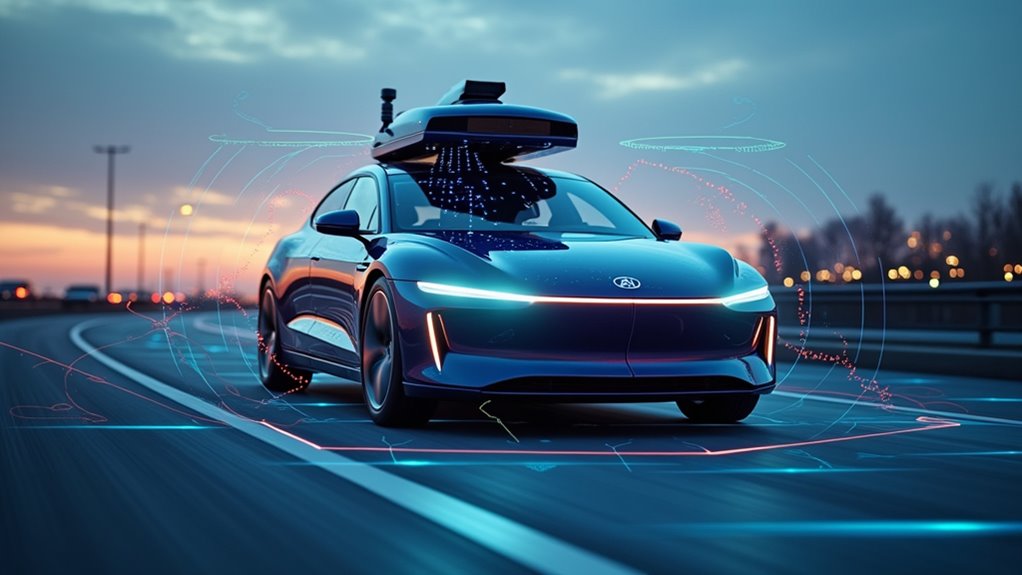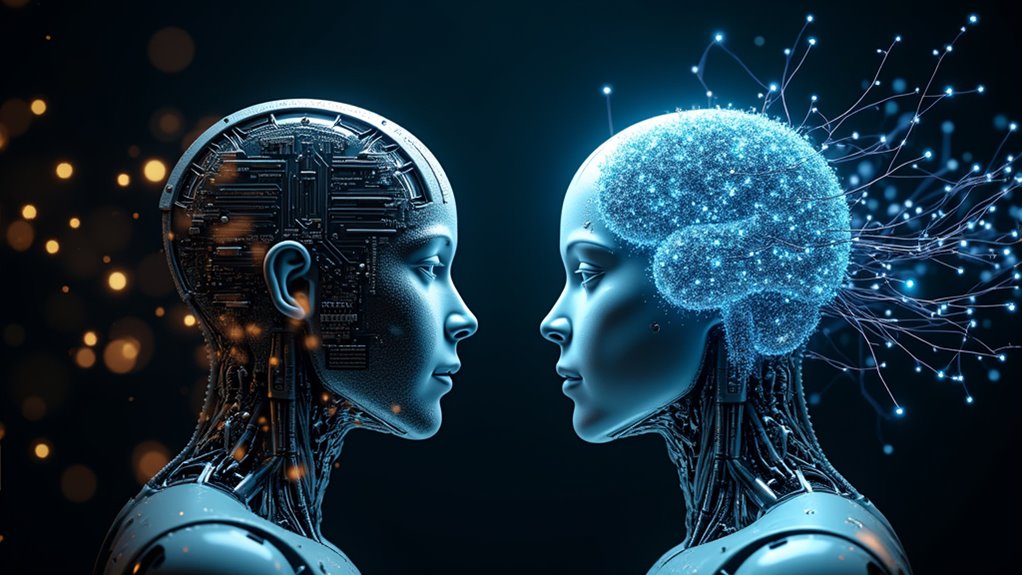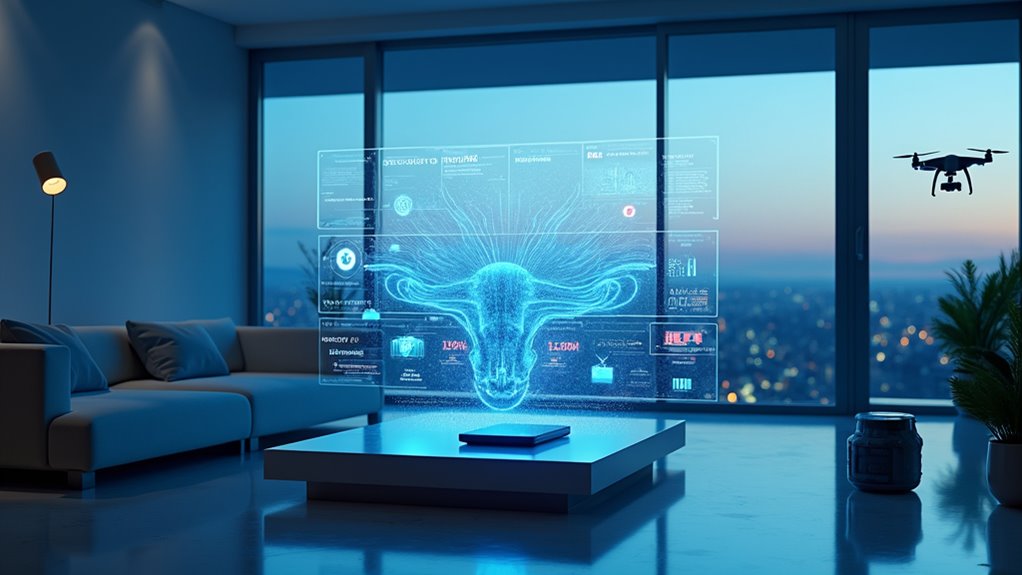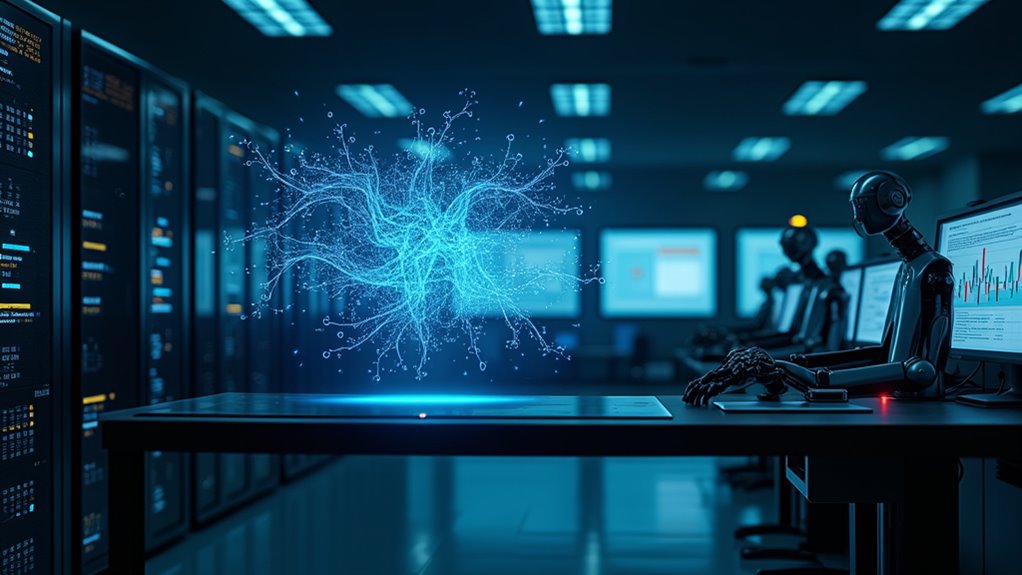Self-driving cars are fundamentally rolling supercomputers powered by sophisticated AI. These machines process massive amounts of data from cameras, radar, and lidar sensors to create detailed 3D maps of their surroundings. The AI makes split-second decisions that often surpass human capabilities, recognizing everything from road signs to unpredictable pedestrians. Multiple safety systems and backups guarantee reliability, while machine learning helps these vehicles get smarter over time. The technology behind autonomous navigation goes deeper than most realize.
While humans continue to debate whether AI will eventually take over the world, it’s already taking over our roads. Self-driving cars, powered by sophisticated artificial intelligence systems, are revolutionizing transportation by making split-second decisions that would make even the most experienced human drivers jealous. These vehicles aren’t just fancy toys – they’re rolling supercomputers processing massive amounts of data from cameras, radar, and lidar sensors to understand their environment in real-time. The automotive AI market is predicted to reach $74.5 billion by 2030.
Think of it as giving cars their own brain and nervous system. The AI processes information from multiple sensors simultaneously, creating a detailed 3D map of the surrounding environment. It’s like having thousands of alert drivers packed into one vehicle, each focusing on different aspects of the road. And unlike humans, these systems don’t get tired, distracted by text messages, or road rage. Advanced inertial navigation systems synchronize and stabilize the vehicle’s LiDAR and cameras for comprehensive environmental understanding. Using sophisticated neural networks, these vehicles process visual data much like the human brain to recognize patterns and objects on the road.
Self-driving cars are like tireless super-drivers, processing countless data points to navigate roads with machine-like precision and focus.
The real magic happens in the machine learning models that power these vehicles. Through supervised and unsupervised learning, cars are trained to recognize everything from stop signs to unpredictable squirrels darting across the road. They’re constantly learning, adapting, and improving their decision-making capabilities. It’s basically a never-ending driving test, but the student gets better every single day.
Safety isn’t an afterthought – it’s built into every aspect of these systems. Multiple sensors provide redundancy because, let’s face it, nobody wants their car to go blind at 70 mph. High-definition maps are continuously updated, and GPS systems work alongside inertial navigation systems to guarantee the vehicle always knows exactly where it is. Even if one system fails, there are backups for the backups.
The technology isn’t perfect yet, but it’s getting there. Companies like Waymo are pushing the boundaries of what’s possible with autonomous navigation. These vehicles communicate with infrastructure, predict other drivers’ behaviors, and can even bring themselves to a safe stop if something goes wrong.
It’s not just about replacing human drivers – it’s about creating a safer, more efficient transportation system. And whether we like it or not, AI is already in the driver’s seat.









